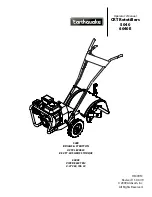
Chapter |
Introduction
Confidential, limited rights
PN 103261 | Revision D | 23-Oct-2019
User Manual
Page
5
1.2 Design Philosophy
Sample preparation for cryo-electron microscopy involves a few steps; application of the
sample to a specimen grid, blotting away excess liquid and shooting the thin (about 100 nm)
sample into liquid ethane.
In the study of thermal behavior of liposomes and intact cells by cryo-EM we found
unpredictable thermal and osmotic effects. These effects were ascribed to the dual effect of
evaporation; cooling the specimen to the dew point and concentration of solutes. Theoretical
analysis as well as experimental evidence indicated that the heat and mass exchange are
rapid processes in an aqueous thin film with a high surface to volume ratio (see figures
below). Time constants involved are a few tenth of a second or shorter. The environmental
humidity is a key parameter for sample evaporation. After preliminary experiments with
environmental controlled chambers it was decided to design and construct a fully
self-contained system that included sample application, blotting and rapid cooling into ethane.
A first prototype was built and automatic blotting was one of the key features of this PC
controlled prototype. After 4 years of experience with this prototype it became clear that the
cryo-EM world was in demand of reliable specimen preparation unit. The Vitrobot
TM
as
presented should fulfill this demand. The Vitrobot (patent pending) is the result of a
complete redesign, involving hardware, electronics and software. The instrument is tested in
research groups with an established reputation in cryo-EM.
1.2.1 Theoretical analysis of specimen thermodynamics
The visualized experiment describes the behavior of a thin film of an aquous specimen at
various temperatures in an environment of 40 °C and a relative humidity of 40 %. Thickness of
water layer is as indicated.
Содержание Vitrobot Mk IV
Страница 1: ...PN 103261 Revision D 23 Oct 19 Vitrobot Mk IV User Manual ...
Страница 38: ......






































